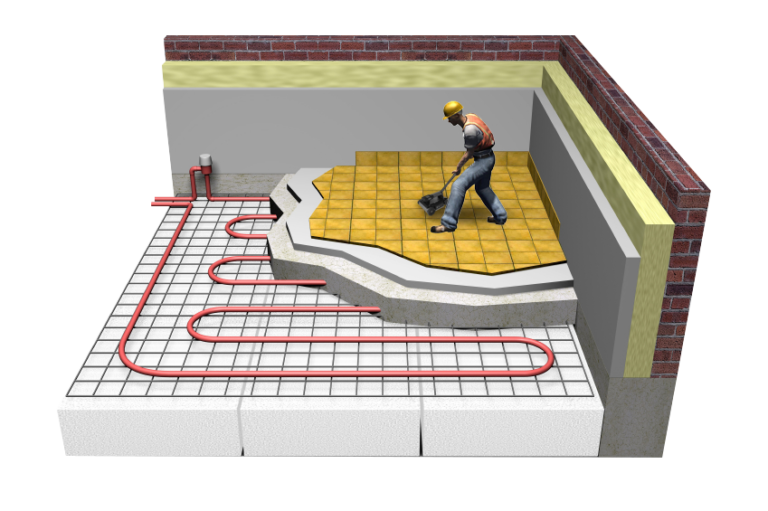RainierGPR Service Areas: Where We Offer Premier Concrete Scanning
Wiki Article
Concrete Scanning: An Essential Step Towards Making Sure Structural Honesty and Security
In the world of construction and framework maintenance, the importance of concrete scanning can not be overstated. By employing advanced innovation and methods, concrete scanning serves as a pivotal tool in guaranteeing that the stability and security of bridges and buildings are upheld to the highest possible standards.Importance of Concrete Scanning
Concrete scanning plays a vital duty in making sure the structural stability and safety and security of structures and framework projects. By making use of advanced technologies such as ground-penetrating radar (GPR) and electro-magnetic induction, specialists can non-destructively check concrete structures to spot possible flaws, spaces, ingrained objects, and reinforcement layout. This process allows very early discovery of abnormalities that could compromise the stability of a framework, preventing costly damages and guaranteeing the safety of passengers.Prior to drilling, reducing, or coring right into concrete, scanning aids identify the accurate areas of rebar, post-tension cables, and other embedded elements, decreasing the threat of unintended hits that could lead to architectural weak points. Additionally, concrete scanning help in high quality control by validating the density of concrete covers and finding any type of discrepancies that might influence the total resilience of the structure.
Innovation for Concrete Assessment

Benefits of Very Early Discovery
Prompt discovery of structural problems can dramatically minimize risks and ensure the long life of construction jobs. By identifying possible problems early in the building procedure, stakeholders can take proactive steps to resolve problems before they escalate right into bigger and extra costly issues. One of the key advantages of very early discovery is the prevention of architectural failures, which can posture serious security hazards and bring about task hold-ups and monetary losses.Moreover, very early detection permits prompt repairs and upkeep, which can aid expand the life-span of the framework. By dealing with problems quickly, construction teams can avoid costly fixings or perhaps the need for premature substitute of structural parts. This aggressive strategy not just saves time and cash yet likewise enhances the total security and sturdiness of the construction job.
In addition, early detection can enhance project planning and decision-making by offering stakeholders with valuable understandings into the condition of the structure. Armed with this info, project managers can make educated selections concerning construction timelines, materials, and techniques, bring about much more effective and efficient project end results.
Guaranteeing Structural Security
Guaranteeing the architectural stability of a building job is paramount to its safety and security and durability. Concrete scanning plays an important duty in guaranteeing structural stability by spotting potential concerns such as voids, delamination, or support rust that can endanger the honesty of the structure over time.By utilizing sophisticated scanning innovations like ground-penetrating radar (GPR) and electromagnetic induction, building professionals can non-invasively inspect concrete structures to identify areas of issue underneath the surface. This positive strategy enables the early detection of weaknesses or flaws, making it possible for timely fixings or support to prevent structural failings.
Regular concrete scanning throughout different building and construction phases and throughout the life cycle of a structure can assist preserve its security, mitigate threats, and make certain the safety of residents. By focusing on architectural security through concrete scanning, building and construction tasks can enhance their resilience and sturdiness, eventually adding to greater safety and durability.

Protecting Against Critical Failings
To safeguard versus tragic occasions, precise surveillance and proactive maintenance are essential in averting vital failings within architectural structures. Detecting potential click over here issues prior to they rise is key to preventing structural failings. Implementing routine evaluations, such as concrete scanning, can reveal concealed defects like voids, fractures, or deterioration that might endanger the stability of a framework. By using innovative scanning innovations like Ground Permeating Radar (GPR) or Concrete X-ray, engineers can non-destructively examine the condition of concrete and determine weak factors that call for support or repair service - RainierGPR Service Areas.
Conclusion
Finally, concrete scanning plays a crucial duty in ensuring architectural integrity and safety by making use of advanced modern technology for very early detection of prospective problems. This aggressive technique aids stop crucial failings and guarantees the stability of structures. It is vital to prioritize concrete evaluation as a standard method to shield the long life and security of structures and framework.Concrete scanning plays an important duty in ensuring find out this here the structural stability and security of buildings and infrastructure tasks. Furthermore, concrete scanning help in top quality control by confirming the thickness of concrete covers and discovering any kind of disparities that might impact the general resilience of the structure. Concrete scanning plays an essential duty in ensuring architectural security by finding possible concerns such as spaces, delamination, or support corrosion that might compromise the stability of the framework over time.

In conclusion, concrete scanning plays a crucial function in making certain architectural integrity and safety by utilizing advanced innovation for very early detection of prospective problems.
Report this wiki page